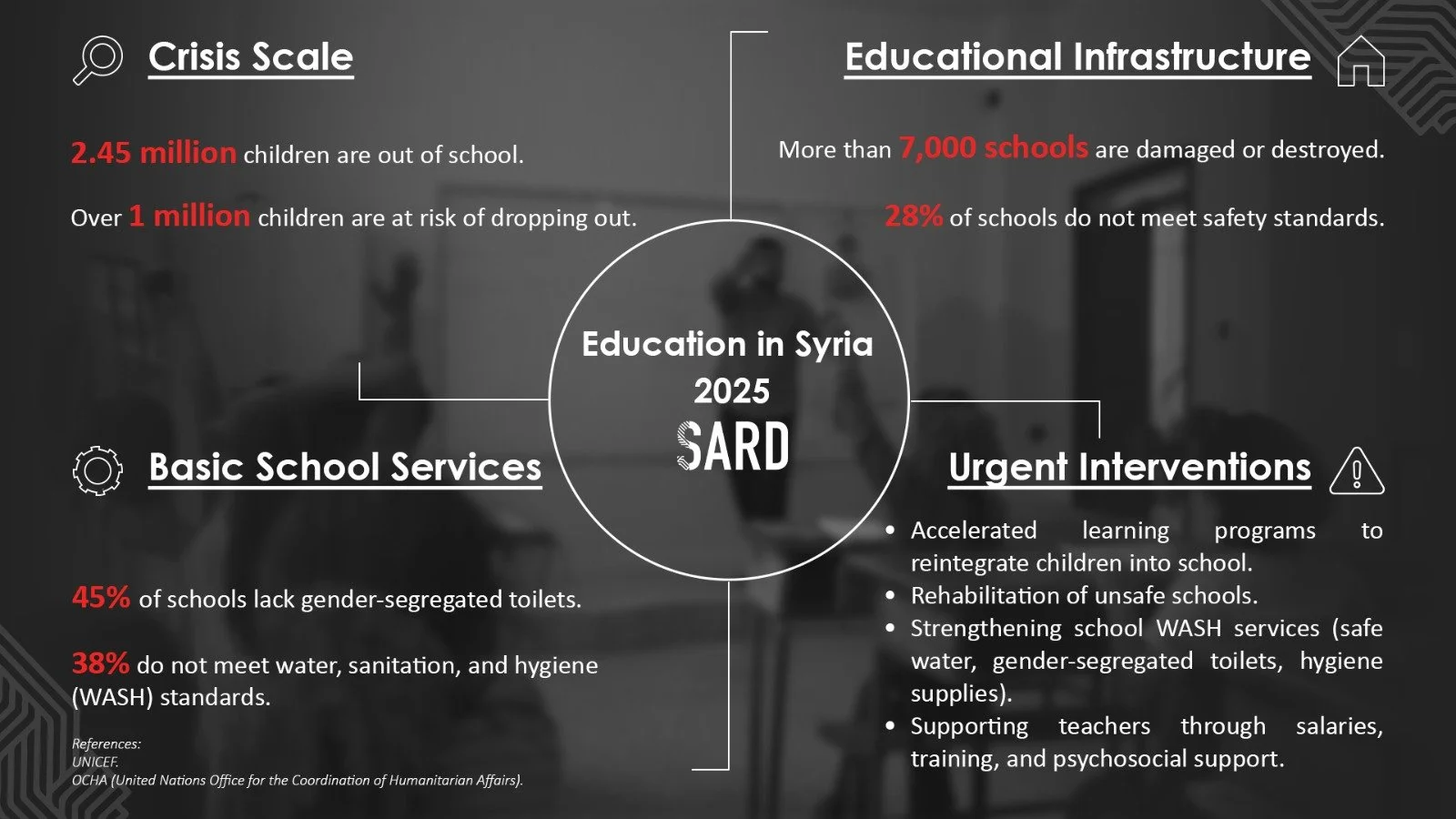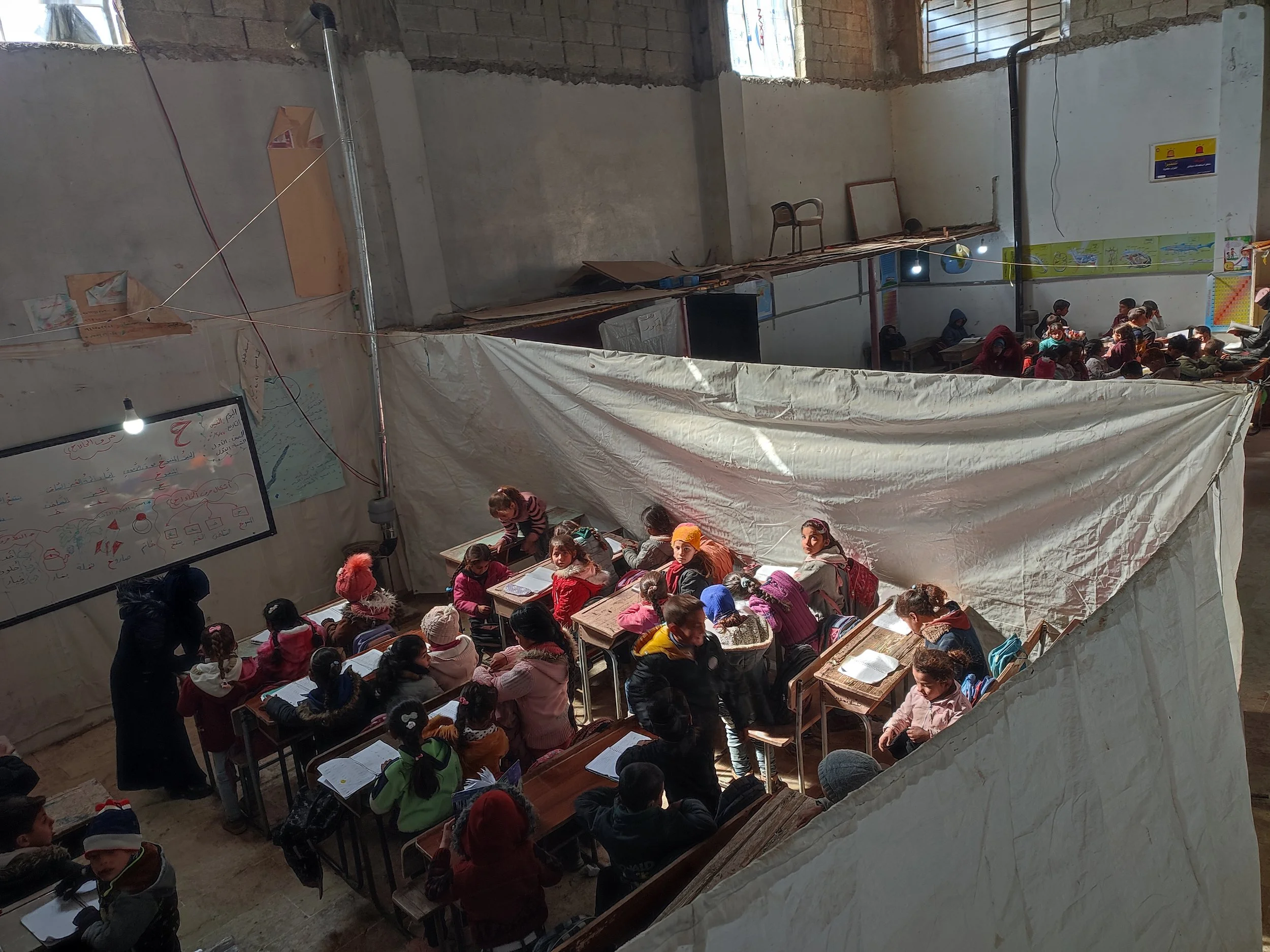The State of Education in Syria
On September 21, children in Syria will return to school, but for many, the classroom is still out of reach. Below is an overview of the impact of years of conflict and economic crisis on education in Syria.
The physical state of schools presents a major barrier to education. Around 7,000 schools have been damaged or destroyed, and more than a quarter of schools do not meet basic safety standards. Classrooms are cold in the winter and unbearably hot in the summer.
300 families who returned to Kafr Amma village in the Aleppo countryside have set up a temporary school in a local warehouse because their school (pictured below) is severely damaged.
Overcrowded classrooms, broken furniture, and limited teaching supplies further hinder learning. Many schools are not accessible to children with disabilities, leaving some of the most vulnerable behind.
Even when schools are functioning, access to essential services is limited. Bathrooms do not meet WASH standards and electricity shortages disrupt learning and increase absenteeism.
The Qurbe School (above and below) in Jandairis serves 175 families living in the village, despite not meeting safety and WASH standards.
Why is access to safe, inclusive schools important for Syrian children?
Being out of school in Syria exposes children to a range of serious risks. Without the structure and protection that schools provide, children are more vulnerable to child labor, early marriage, and exploitation. Adolescents, in particular, may be pressured to work, while girls are at higher risk of early marriage, which can limit their education and life opportunities permanently. Children living with disabilities face even greater barriers, often being left behind entirely, reinforcing cycles of exclusion and inequality.
Attending school offers much more than academic learning. Schools provide:
Safe spaces for children to grow, play, and socialize, supporting emotional well-being and mental health.
Opportunities for future careers, equipping children with skills to contribute to their communities.
Critical thinking and resilience, helping children adapt and overcome challenges.
Peer interaction and a sense of belonging, which are essential for personal development and recovery.
At a broader level, education is essential for the Syria’s recovery and long-term stability. Every child who learns in a safe, inclusive environment becomes part of a generation that can help rebuild communities, strengthen local economies, and contribute to Syria’s future governance and social cohesion. In this way, ensuring access to quality education today is not just about protecting children: it is an investment in Syria’s future, resilience, and stability.
Are you interested in improving Syria’s current state of education? Reach out to SARD at info@sardngo.org to learn more or donate today.
The Al Rabia School stands in ruins in the Sheikh Ahmed village, Aleppo.










